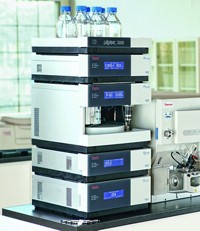Advertisement
Grab your lab coat. Let's get started
Welcome!
Welcome!
Create an account below to get 6 C&EN articles per month, receive newsletters and more - all free.
It seems this is your first time logging in online. Please enter the following information to continue.
As an ACS member you automatically get access to this site. All we need is few more details to create your reading experience.
Not you? Sign in with a different account.
Not you? Sign in with a different account.
ERROR 1
ERROR 1
ERROR 2
ERROR 2
ERROR 2
ERROR 2
ERROR 2
Password and Confirm password must match.
If you have an ACS member number, please enter it here so we can link this account to your membership. (optional)
ERROR 2
ACS values your privacy. By submitting your information, you are gaining access to C&EN and subscribing to our weekly newsletter. We use the information you provide to make your reading experience better, and we will never sell your data to third party members.
Materials
Element Six
by Stu Borman
April 15, 2013
| A version of this story appeared in
Volume 91, Issue 15

COVER STORY
Pittcon Instrument Roundup
There’s a new electrochemical electrode material in town. Synthetic diamond materials maker Element Six, a member of the De Beers Group, in collaboration with the University of Warwick has engineered an electrochemically active boron-doped diamond material called Diafilm EA (where “EA” means electroanalysis grade). Diafilm EA “shows metal-like conductivity, enabling efficient and fast electron transfer in and out of the material for oxidation and reduction of a wide range of classical redox mediators in solution,” says Element Six principal research scientist Tim Mollart. It can detect a wider range of species in solution at better detection limits than conventional electrode materials. And it features high reversibility in electron-transfer reactions; fast response time; good resistance to fouling; and easy cleanability. Electrodes made from Diafilm EA are more stable than conventional electrodes when used to monitor harsh industrial processes involving corrosive materials, elevated temperatures, and high pressures. “In many of the most demanding of electroanalysis applications, Diafilm EA has the ability to perform thousands of cycles, whereas other electrode materials only survive a single use,” the company says. Element Six is interested in collaborations to develop a range of applications for Diafilm EA in electrochemical sensing and detection and in electrochemical organic synthesis.





Join the conversation
Contact the reporter
Submit a Letter to the Editor for publication
Engage with us on Twitter